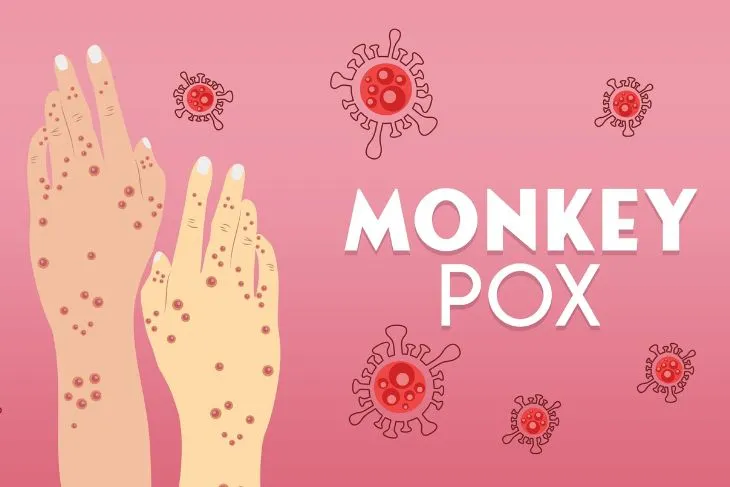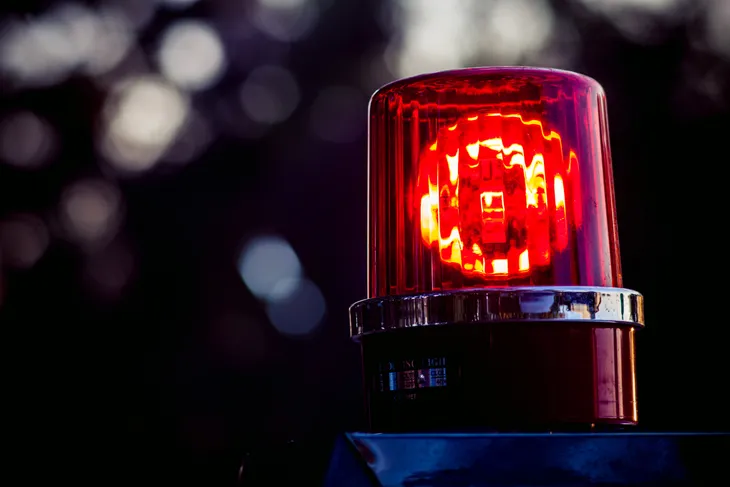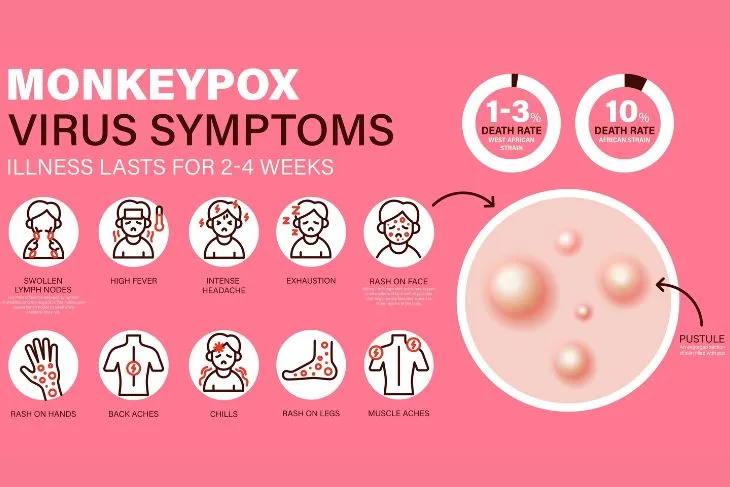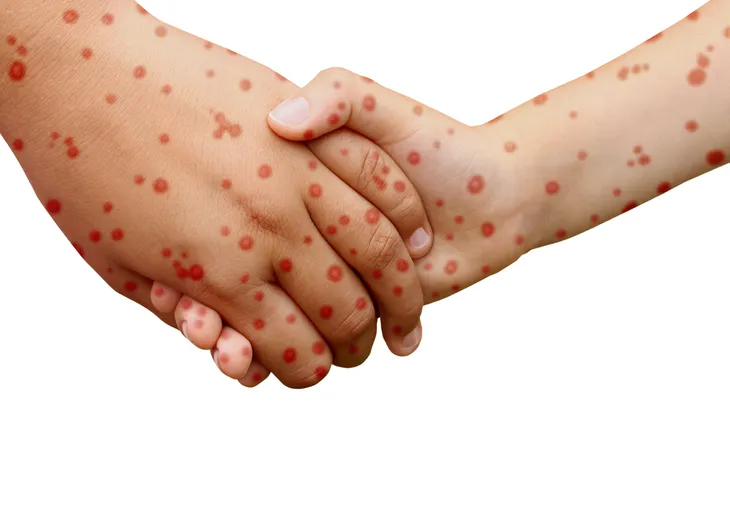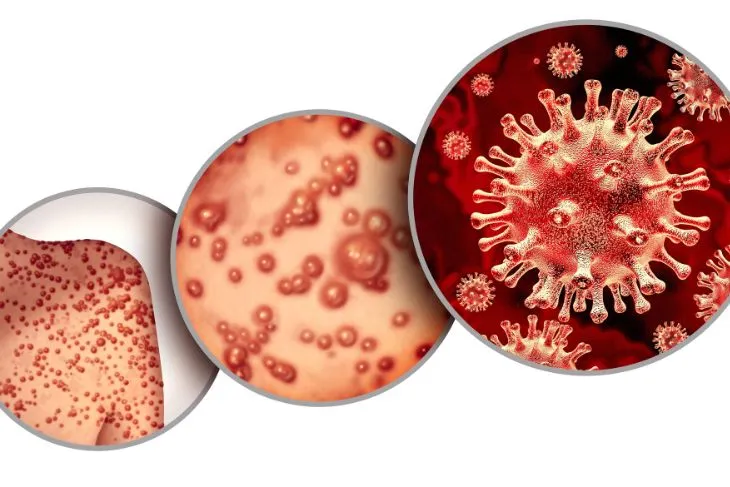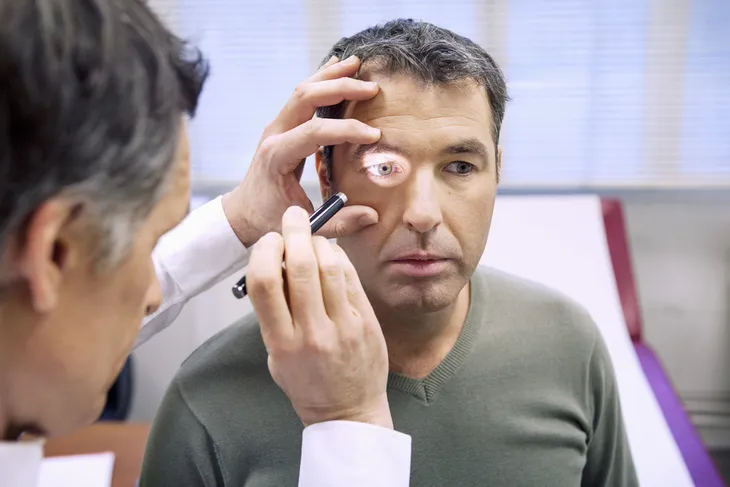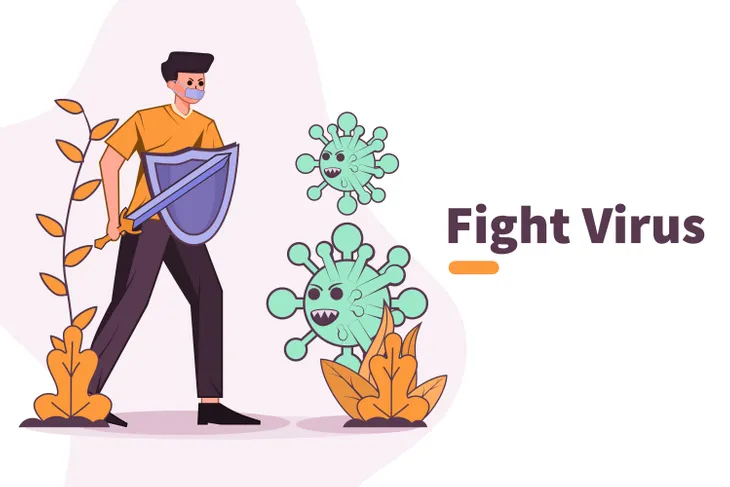- Monkeypox is a rare disease that causes an infection by the monkeypox virus which is classified as an orthopoxvirus (same virus that causes smallpox).
- Transmission is not easy, so public risk is low, but there have been recent cases reported in several European countries, as well as the U.S., Canada, and Australia.
- The symptoms are similar to smallpox, but milder. After the fever develops a rash will appear.
- Monkeypox spreads through direct contact with the infection, such as through blood, bodily fluids, skin or mucous lesions, or respiratory droplets.
Until recently, monkeypox was a disease that most people had never heard about. This is because it’s a rare infection that is mainly spread through wild animals in parts of west and central Africa. However, according to health officials and media reports, cases of monkeypox are surfacing in many European countries, as well as the United States, Canada, and Australia. In fact, three states in the U.S. have now declared a state of emergency.
Monkeypox is a zoonotic disease which means it’s transmitted from animals to humans, or human to human. Despite the growing number of cases, the risk of spread between people and the public is low. For those who do become infected, the symptoms are usually mild and most people recover within a few weeks, says the UK’s National Health Service (NHS). Read on to learn more about monkeypox, including the symptoms, causes, and treatment options…
What is Monkeypox?
It is a rare disease that causes an infection by the monkeypox virus. “Monkeypox virus belongs to the Orthopoxvirus genus in the family Poxviridae,” explains the Centers for Disease Control and Prevention (CDC). “The Orthopoxvirus genus also includes variola virus (which causes smallpox), vaccinia virus (used in the smallpox vaccine), and cowpox virus.”
Monkeypox was first discovered in 1958 when a pox-like disease spread through a colony of monkeys, hence the name. These monkeys were kept in captivity for lab research. It is a zoonotic disease which means it can be transmitted from animals to humans and vice versa, says Healthline. Unfortunately, it can also be spread from one human to another.
How Common is Monkeypox?
Monkeypox is rare, but according to the Cleveland Clinic the number of cases in Africa have been increasing. “Smallpox and monkeypox are caused by similar viruses, so when people were vaccinated against smallpox it also protected them from getting monkeypox,” writes the source.
It goes on to explain that because smallpox was eradicated, people are no longer vaccinated against it which means they do not have protection from monkeypox. While it’s impossible to know the natural reservoir of monkeypox, the CDC reports that African rodents and non-human primates (monkeys) may carry the virus and infect people.
Where is Monkeypox Found?
The first human case of monkeypox was recorded in 1970 in the Democratic Republic of the Congo (DRC) during a time when there was a big push to eliminate smallpox, explains the CDC. It has since been reported in several other countries, primarily in central and western Africa: Cameroon, Central African Republic, Cote d’Ivoire, Democratic Republic of the Congo, Gabon, Liberia, Nigeria, Republic of the Congo, and Sierra Leone. The CDC points out that most infections are found in the Democratic Republic of the Congo.
As we now know due to recent news reports, monkeypox has been found outside Africa. Each time it surfaces, it’s linked to international travel or imported animals. Cases have been reported in the United States, Israel, Singapore, the United Kingdom, and most recently Spain, Portugal, Australia, and Canada.
History of Monkeypox in the United States
While monkeypox is rare, there were two confirmed cases in the United States in 2021. Both of these cases were associated with international travel. The first case occurred in July 2021 after an American citizen returned to the United States from Nigeria. According to the CDC, this person traveled on two commercial flights and was in contact with 200 people (all of whom were contacted and told to monitor for symptoms in the following 21 days). By September 2021, no new cases were reported.
The next case surfaced in November 2021 and was again reported by an American who recently traveled to Nigeria. There were no new cases reported until May 2022 when the Massachusetts Department of Public Health confirmed a single case of monkeypox infection in a man who recently traveled to Canada. STAT News reported the man traveled to Quebec where health officials are investigating over a dozen suspected monkeypox cases.
Prior to 2021, the last outbreak of monkeypox in the United States was in 2003 when a shipment of 800 small mammals arrived in Texas from Ghana. Some of these animals later tested positive for the monkeypox virus. “The infected animals were housed near prairie dogs at the facilities of an Illinois animal vendor,” explains the CDC. These dogs were sold as pets before showing signs of an infection. People who became infected with monkeypox all had close contact with the dogs.
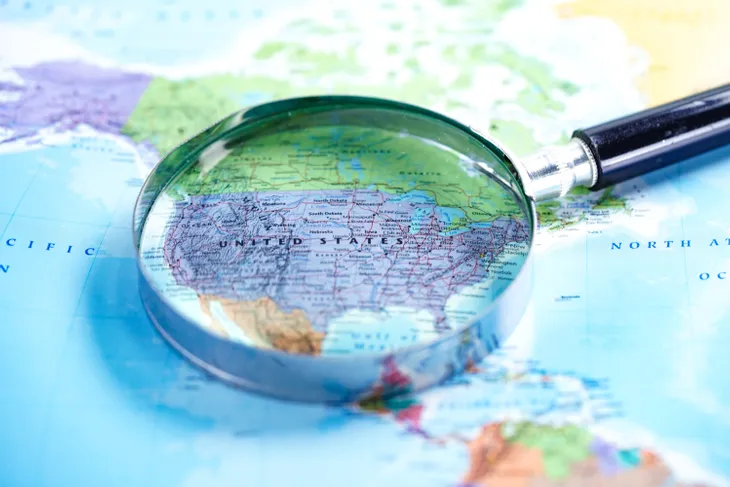 sasirin pamai / Shutterstock.com
sasirin pamai / Shutterstock.comState of Emergency
The status of monkeypox around the world is continuously changing as more and more cases surface. In recent months the situation has become more severe. At the time this article was written, there are over 6,300 probable or confirmed cases of monkeypox in the U.S., according to data from the CDC. Three states (California, New York, and Illinois) have now issued a statewide declaration of emergency in relation to monkeypox. This is an effort to boost monkeypox vaccinations.
In addition to that, on July 23, 2022, the World Health Organization director declared the escalating monkeypox outbreak a Public Health Emergency of International Concern (PHEIC). However, the Biden administration has yet to issue a nationwide public health emergency declaration.
Who is at Risk?
Anyone can get monkeypox, but it’s more common in children. In Africa, 90-percent of cases were in children under the age of 15, according to the Cleveland Clinic. While the infection is often mild, severe cases can be fatal. This is usually only the case in younger people, prolonged exposure to the virus, poor overall health, or those who develop complications.
Healthline lists the following indicators for people who should be screened for monkeypox:
- Live with people who have developed monkeypox
- Work around people who have monkeypox
- Have traveled to a country where monkeypox is more common
- Have interacted with imported animals
- Received a bite or scratch from infected animals
- Ate partially cooked meat or other products of infected
- Visit or live near a tropical rainforest
 Oni Abimbola / Shutterstock.com
Oni Abimbola / Shutterstock.comSigns and Symptoms of Monkeypox
Since the monkeypox virus is classified as an orthopoxvirus, the same virus that causes smallpox, the symptoms are similar. However, the symptoms associated with monkeypox tend to be milder. According to Healthline, symptoms will appear 5 to 21 days after you contract the virus. In most cases, this time frame is 7 to 14 days.
Fever is often the first symptom, followed by “headache, muscle aches, backache, fatigue, chills,” and swollen lymph nodes (lymphadenopathy), notes the source. A rash will follow 1 to 3 days later. The rash typically affects the: “face, which is the most common site, the palm of hands, soles of the feet, mouth, genitalia,” and the eyes, including the conjunctivae and cornea.
The monkeypox rash tends to follow a specific pattern. WebMD describes it as “flat, round lesions (macules) grow into slightly raised bumps (papules), then into bumps filled with clear fluid (vesicles).” These will later change into bumps with a yellowish fluid (pustules) that crust over and fall off.
How Do You Get Monkeypox?
Health officials have reassured that the rate of transmission of monkeypox is low, but the virus can be passed from any infected animal or human to someone else through blood, bodily fluids, or monkeypox lesions on the skin, including inside the nose and mouth. Essentially any contact with things that have touched these bodily fluids will pass it on.
WebMD also explains that the virus can get in through a break in the skin, even one that is not clearly visible like through the mouth, nose, or eyes. “You could also breathe it in, but you’d probably have to be in close contact for a fairly long time. That’s because larger droplets don’t travel very far,” says WebMD.
Monkeypox Diagnosis
The easiest way to diagnose monkeypox is by asking questions and examining any visible symptoms. A doctor will want to know about any known contact with the virus. They’ll also work to rule out other similar conditions like measles, chickenpox, syphilis, allergies, scabies, and bacterial skin infections. A big differentiator between monkeypox and more common illnesses like measles or chickenpox is swollen lymph nodes.
They’ll likely take a tissue sample and look at it under a microscope to confirm a diagnosis, says the Cleveland Clinic. You might also have to provide a blood sample to check for the monkeypox virus or antibodies in your immune system.
How Long Does it Last?
The incubation period for monkeypox is usually 2 to 4 weeks before it eventually runs its course, says the Cleveland Clinic. If you’re exposed to the virus, your health provider or health officials will monitor you for 21 days.
While monkeypox is often compared to smallpox, it is a much milder infection. However, people should still be wary, particularly children, people with other health conditions, or those with a weak immune system. It can be fatal in up to 10-percent of cases, usually in the younger age groups, says WebMD.
Monkeypox Treatment
Unfortunately, there is no safe treatment for the monkeypox virus infection. It’s self-limiting which means it will get better without treatment. In most cases, the only form of treatment is to relieve symptoms and allow the infection to run its course. Symptoms are typically mild and people generally recover within 2 to 4 weeks, says NHS.
The CDC notes that an outbreak in the United States can be controlled with either the smallpox vaccine or antiviral medications. According to the World Health Organization (WHO), the smallpox vaccine is 85-percent effective in preventing monkeypox. A vaccine was developed and approved to prevent smallpox and monkeypox in 2019. However, it is not widely available to the public.
Potential Complications of Monkeypox
While monkeypox infection is mild (especially for people over the age of 50 with the smallpox vaccine), there can be complications. Healthline lists bronchopneumonia, sepsis, encephalitis (inflammation of brain tissue), infection of the cornea (clear outer layer of the eye), and secondary infections as potential risks.
If there is an infection in the cornea, it could lead to vision loss. Healthline also notes that in severe cases, “the lesions might form together and cause the skin to fall off in large pieces.”
How Can I Prevent Monkeypox?
While the public risk is low, it’s important to know how to protect yourself. The CDC lists a number of measures that can prevent an infection of the monkeypox virus. The most important is to avoid contact with animals that may harbor the virus. This includes sick or deceased animals in areas where monkeypox is known. You should also avoid contact with materials, such as bedding that have been in contact with a sick animal.
You should isolate from patients who are sick or at risk of an infection. As always, practice good hand hygiene after contact with infected animals and humans. This means washing your hands with soap and water or using an alcohol-based sanitizer. Personal protective equipment (PPE) is also a necessity when caring for patients.


